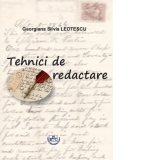As the overarching purpose of this book is twofold (provide arguments for the unprecedented popularity of the novels and attempt to prove that they do not contribute to the declining standards of literacy), we aim to explore J. K. Rowling’s novels published between 1997-2007 in terms of their compliance with or deviation from the patterns of the school story and fantasy as literary genres.
Structurally, the book is divided into five key chapters, but also comprises the sections dedicated to Introduction, Conclusions, Appendices and Bibliography, alongside a conceptual framework and a table of classification, which are intended to provide not only theoretical, but also functional investigations. We assume that this approach has the potential to challenge some of the criticism that Rowling has received regarding the literary value of her work.
The only chapter which navigates beyond the internal narrative structure is intentionally placed in the last part of the research. It is mainly centred on proving through statistics the impact of the series on the readers, providing arguments for the several claims to ascribe the status of a cultural phenomenon to the Harry Potter novels, and indicating the perilous outcome that contemporary elements of child culture (computer games, films, marketable products) may generate: cultural hegemony.



























